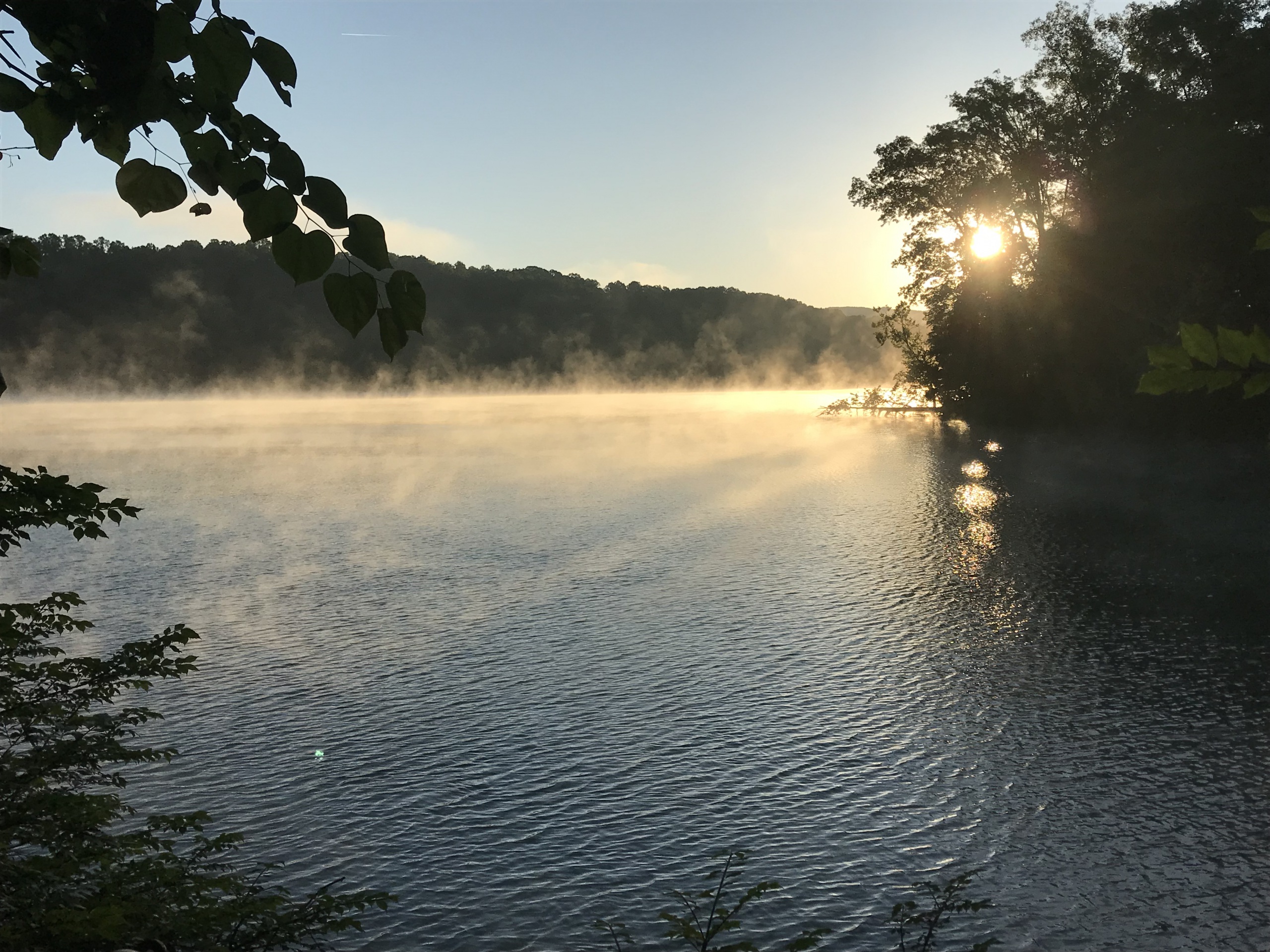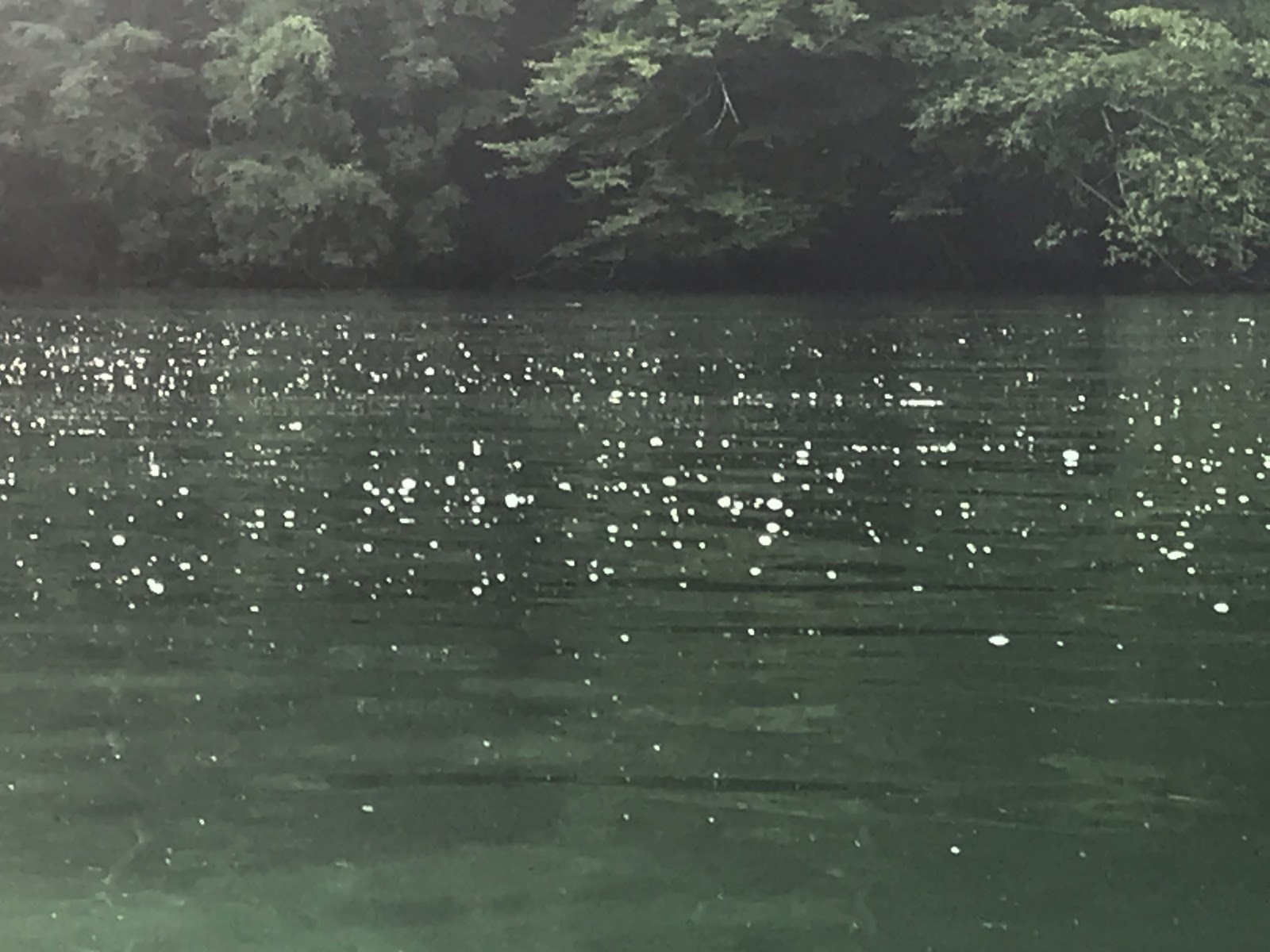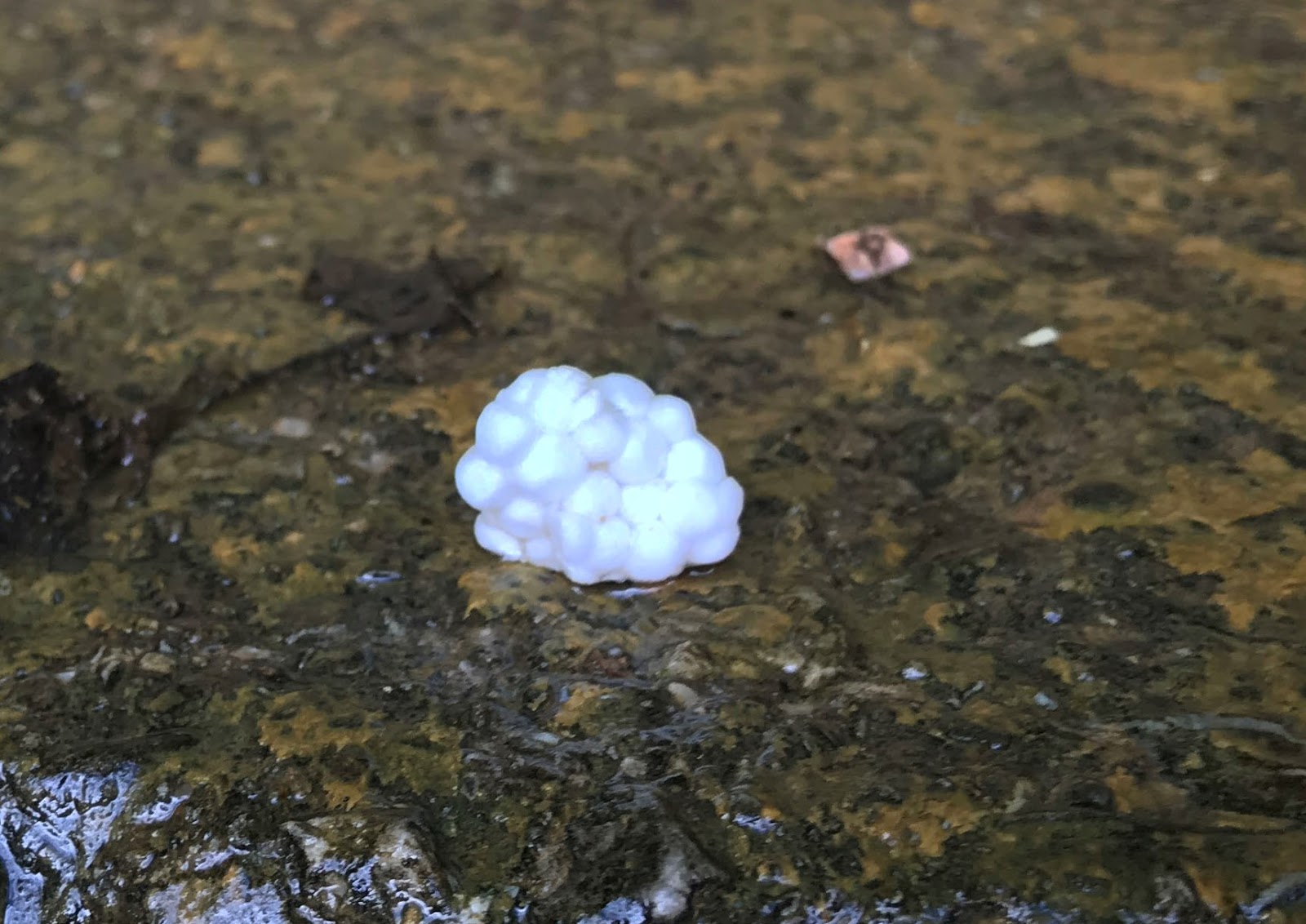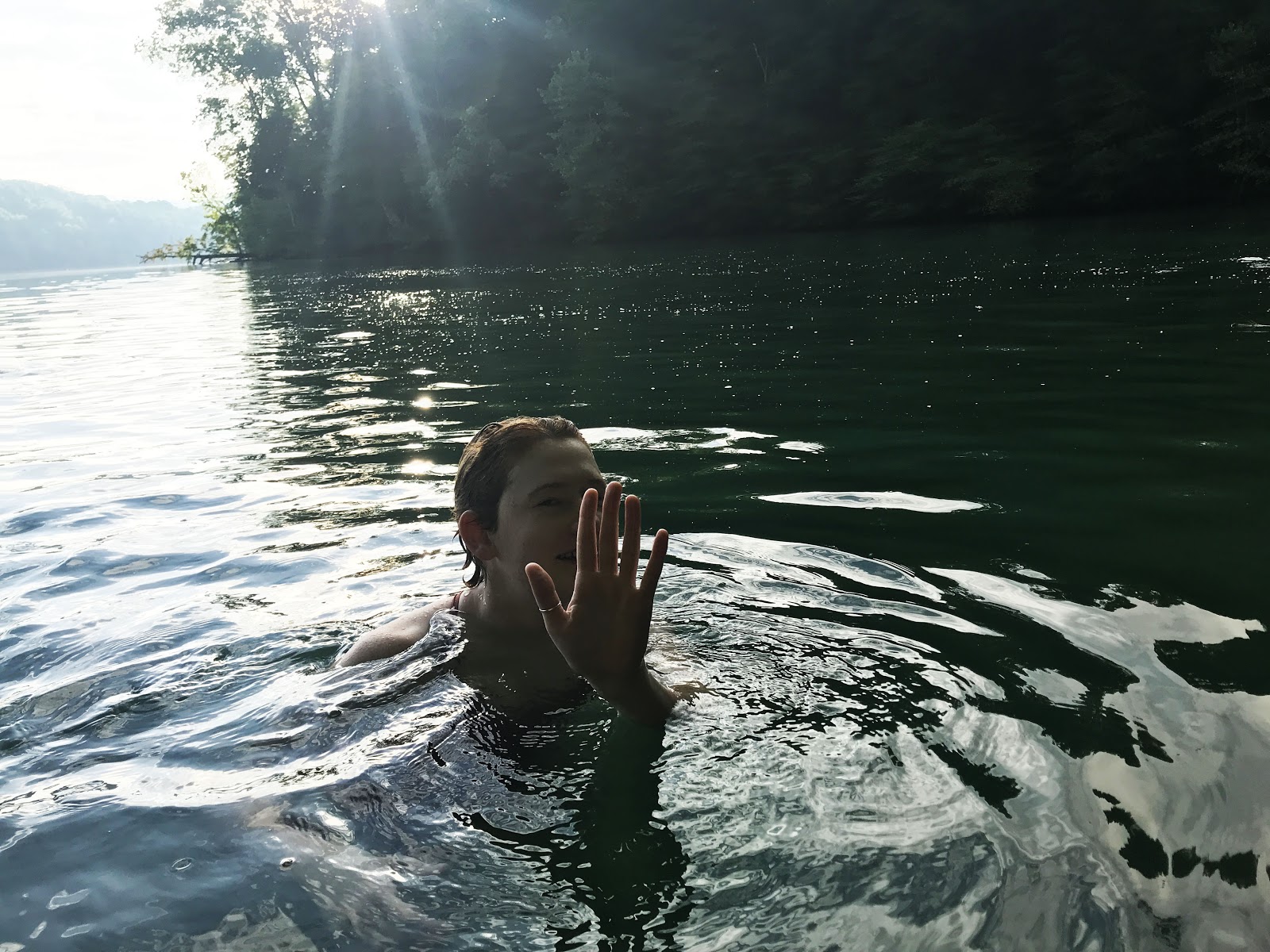Flower petals or plastic pollution?
How docks can stay afloat without harming wildlife

Most summer mornings, my mom and I take a three-minutes drive into the state park. We then follow a trail in the woods to the not-so-secret swimming hole, where old concrete steps lead down into the green water of Norris Lake. If you go early enough, the lake is silent, mist cloaks the shoreline and ghostly blue herons tiptoe through the damp weeds. It’s a pretty good way to start the day.
A few weeks ago, when we arrived at the concrete steps, we looked out at the water and saw what we thought were white flower petals eddying through our secret cove. When we got closer, we saw that they weren’t flowers — they were small pebbles of polystyrene foam.

Plastic foam making its way into our morning swimming cove.
Growing up around Norris Lake, I’ve seen this foam before. It appears as marble-sized floaters or great chunks washing onto shore, snared by tree limbs and rocks. This debris appears every once in a while like marble statues on the edges of coves, breaking off into smaller pieces that float on the green water. Though the foam itself was familiar to me, I had never stopped to wonder exactly where it all came from. After that morning, seeing the flower petals of foam washing over our swimming spot, I did some research.
As it turns out, flotation devices for docks have it pretty rough. They need to withstand marine environments, which include the nibbling of wildlife and the general wear and tear of living their whole lives underwater. For a long time, expanded polystyrene foam (EPS) has been the most popular choice for keeping docks afloat. You might recognize polystyrene foam from its trademarked name Styrofoam, which is commonly used for such everyday plastic items as takeout containers and egg cartons.

A close-up of these pebbles of polystyrene foam taken from the lake.
EPS is the material of choice for docks because it’s great at floating. It has an added rigidity that makes it especially appealing, and it doesn’t rot when it stays submerged beneath water. But the strengths of EPS are exactly what make it dangerous to wildlife. When the plastic foam is unencapsulated, meaning it isn’t encased in any way by plastic or rubber, it can get bumped by boats, animals and other marine elements. This results in the “beading off” of pebbly white pieces, which is what I saw that day in our swimming cove. These pieces of foam look particularly appealing to wildlife, who might mistake them for a snack and get them stuck in their airways.
Not only does this bode ill for the silent blue herons on our shores, but the U.S. Army Corps also found that this foam can leach chemicals into the water like benzene, styrene and ethylene, all of which are harmful to freshwater wildlife. What’s more, this foam is one of the toughest types of plastic to get rid of, as polystyrene never fully breaks down, lingering in our environment forever.
Luckily, there are alternatives. At a minimum, dock-owners can encapsulate the foam to keep it from breaking off into the water. Even better, docks can opt for entirely non-EPS alternatives like large, floating barrels or sealed air, which keep docks above the water without using foam.
The Tennessee Valley Authority (TVA) does have regulations for the kinds of flotation devices structures can use to help keep these foam pebbles from entering our waterways and wildlife food chains. For all floating surfaces on our lakes and rivers, “Styrofoam floatation must be fully encased.” Rules like these are becoming more commonplace in waterways across the country, but they don’t exist everywhere.
Most likely, the foam pellets I found in our not-so-secret swimming cove came from outdated personal docks that haven’t been updated since the TVA’s rules went into effect. Seeing the white chunks standing out against our shoreline is a grim reminder of one of plastic’s most nefarious realities: Even after we stop using it, we’ll be cleaning up the mess for years to come.

Me in the lake, refusing the paparazzi photos of my photographer (my mom). You can see the flower petals of foam glistening in the sun behind me.
Like others who visit Norris Lake, I take the trail through the woods and walk down the old concrete steps into the green water to feel closer to nature. I like spending my mornings remembering what an incredible world we live in and how lucky I am to share this serene piece of it. Occasionally my mother and I run into other swimmers or share the cove with local fishermen. Boats meander through the water nearby, soaking in the summer sunlight and the clear, warm water, full of diverse wildlife.
Thank goodness we have wild, natural places like this to enjoy. The trick is learning as a society how to enjoy them without harming them in the process.
